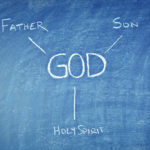“What is First Maccabees?”
This question—posed to me by a second-year theology graduate student—reminded me of a gap in knowledge often found among Protestants about the so-called Apocrypha.
Though the original King James Version included the Apocrypha in a separate section, essentially all Protestant Bibles after the late-1600s have excluded these books. We now face a strange situation: The Bibles of almost 60 percent of global Christianity (i.e., Roman Catholicism and Eastern Orthodoxy) include these writings as “Deuterocanon,” while many Protestants either don’t know they exist—or view them with suspicion.
But should this be the case?
| The “Apocrypha” are a collection of Greek writings (though some may have had Hebrew sources) that emerged from 300 BC to AD 100 , including the following (brackets indicate debated status):
|
||
| 1–2 Maccabees
Judith Tobit Additions to Esther Wisdom of Solomon |
Sirach
Baruch Epistle of Jeremiah Additions to Daniel |
[Two books of Esdras]
[3–4 Maccabees] [Prayer of Manasseh] [Psalm 151] [Psalms of Solomon] |
If we look to our Protestant past, we find a different posture toward the Apocrypha. Article 6 of the Belgic Confession states, “The church may certainly read these books and learn from them as far as they agree with the canonical books.” The sixth Article of Religion of the Book of Common Prayer reads, “The other books . . . the church doth read for example of life and instruction of manners.” And though the Westminster Confession (1.3) takes a negative stance, it still permits their use analogous to “other human writings.” Many Reformers and Puritans were well-versed in them.
What would it look like for Protestants to rediscover a proper use of the Apocrypha?
Doctrinal Authority or Personal Edification?
Answering this question requires entering into a longstanding debate over two issues: Which writings are the authority on doctrine, and which are useful only for personal edification?
We see glimmers of this differentiation as early as 4 Ezra 14.44–48, but the issue comes to the forefront with Origen, Augustine, and Jerome. Origen and Augustine suggest that the Apocrypha should be received as authoritative because the church largely uses them that way, given they were often circulating with the Greek translations of the Scriptural books. But Jerome goes a different direction. In his Prologue to Wisdom and Sirach, he argues:
As the church reads Judith, Tobit, and the books of the Maccabees, but does not admit them among the canonical Scriptures, so let it also read these two volumes for the edification of the people, not to give authority to doctrines of the church.
Jerome reiterates this distinction between edification and authority in his Vulgate preface.
The early Reformers, from Karlstadt and Luther onward, adopt Jerome’s distinction. The Book of Common Prayer explicitly cites Jerome to this effect, as does Calvin. Perhaps surprisingly, many medieval Roman Catholic theologians did the same (for example, Nicholas of Lyra, Cardinal Cajetan, Cardinal Ximenes). Only at the Council of Trent did the Apocrypha become fully authoritative as a “second canon” within Roman Catholicism.
Only at the Council of Trent did the Apocrypha become fully authoritative as a ‘second canon’ within Roman Catholicism.
What, then, are we to make of this tug-of-war between authority and edification?
Authority and the Messiness of History
To handle the Apocrypha wisely, Protestants need a coherent stance on whether its books possess divine authority or not.
History on this front is somewhat messy. On the one hand, early Jews and Christians clearly used the Apocrypha. Books like Tobit and Sirach were found among the Dead Sea Scrolls, and Josephus employs 1 Maccabees and 1 Esdras as historical sources. Moreover, several Apocrypha are quoted by early Christian writers (for example, Polycarp quotes Tobit, and 1 Clement quotes Judith). This continues into the Reformation; for example, in Calvin’s commentary on 1 Corinthians 10:20, he quotes Baruch 4:7 as a “prophet.”
On the other hand, scattered citations of these books do not automatically confer authority. Among early Jews, Josephus excludes the Apocrypha from his canon list, and Philo paid them little attention. The early Old Testament translators Aquila, Symmachus, and Theodotion ignored them. Jewish rejection of the Apocrypha was solidified in the second century AD.
Scattered citations do not automatically confer authority.
Among Christians, things are a bit murkier. Some early canon lists (for example, Origen, Melito, Mommsen, Hilary, Athanasius, Council of Laodicea) included various Apocryphal books. Additions to Esther and Daniel were sometimes considered part of their respective canonical writings. And most Greek Old Testament codices included various combinations of Apocryphal books.
With such complex historical data, are there stable grounds for Protestants rejecting the authority of the Apocrypha? Yes.
Three-Pronged Case Against Apocryphal Authority
Three cumulative considerations might be offered.
1. Scripture is covenant documentation.
There is a subtly important phrase in 2 Corinthians 3:14: “when they read the old covenant.” God’s covenant is something to be read. This taps into a deep vein of biblical theology whereby God’s covenant takes permanent form in scriptural writings (e.g., Ex. 31:18; Ps. 50:16; and so on).
This covenantal understanding of Scripture continues in the early Jewish-Christian period. Sirach and 1 Maccabees describe the Old Testament as a “book of the covenant” (Sir. 24:23; 1 Macc. 1:56–67), as do many church fathers (Melito, Irenaeus, Tertullian, Origen, Cyril of Jerusalem).
Writings given by God as covenant documentation are inherently authoritative by virtue of the Covenant-Maker. They aren’t awaiting future debates about authority. They simply are.
How does this illumine the Apocrypha question? The undisputed Old Testament writings (Genesis–Malachi) were given by God as his covenant purposes for Israel were being worked out. The Old Testament ends, however, in the state of open-ended covenant curse, with a post-exilic restoration that fell short. Malachi anticipates a future day when God would finally return to his temple (Mal. 3:1–4; 4:1–5). Even the Apocryphal writings—especially Baruch—attest to a sense of ongoing exile among the Jewish diaspora. In such a period of covenant curse, there would be no reason to receive miscellaneous new writings—particularly those composed (or translated) in Greek under the Greco-Roman empire—as covenant Scriptures in the same sense as the Hebrew writings of ancient Israel.
2. The threefold canon emerges early.
There are early signs that the authoritative covenant documents were received as a threefold Hebrew collection: Law, Prophets, and Writings.
We see this first in the Old Testament itself. Earlier Old Testament writings are regularly cited by later ones, indicating a growing recognition of authority. A vague sense of threefoldness is evoked even within the Old Testament (see Zech. 7:12; Jer. 18:18; Ezek. 7:26).
When we assemble the evidence, the authority question is ultimately settled in the direction of the Jewish canon endorsed by Jesus, Jerome, pre-Trent Catholicism, and the Reformers.
The threefold shape of the canon is well-attested in early Jewish works like the Prologue to Sirach; 2 Macc. 2:13–14; 4Q397; Philo (Cont. 25); and Josephus (Apion 1.8). Most importantly, Jesus affirms the threefold authoritative “Scriptures” in Luke 24:44–45.
In short, early Jews and Christians ascribe authority only to the Law, Prophets, and Writings. There is no evidence that any Apocryphal books were received into this collection.
3. Apocryphal writings do not attest their own authority.
Finally, the Apocrypha generally put themselves in a different category from the authoritative Scriptures. As mentioned above, the Prologue to Sirach acknowledges the “law and the prophets and the others that followed them,” but then speaks of the work of Ben Sira himself as merely “something” written for instruction—not an addition to the canonical collection. Psalm 151’s introduction states that it is “outside the number.” And the recurring refrain of the Hebrew Scriptures—“Thus says the LORD”—is essentially absent from the Apocrypha.
When we assemble the evidence, the authority question is ultimately settled in the direction of the Jewish canon endorsed by Jesus, Jerome, pre-Trent Catholicism, and the Reformers.
Can the Apocrypha Be Used for Edification?
In light of this, what might it look like to approach the Apocrypha for edification without ascribing them authority? A few suggestions come to mind.
First, the Apocrypha provide invaluable insight into first-century Jewish soteriology. Often the Talmud’s 613 mitzvot (commandments) will be mentioned in the pulpit as a lens on Judaism in the New Testament, but this is anachronistic, given they were not codified as such until the third century AD or later. The Apocrypha are more historically relevant; much is gained, for example, by contrasting Abraham’s imputation in 1 Maccabees 2:52 with Romans 4.
Second, the Apocrypha provide historical coloring for the Gospels. Many details in the Gospels—the Zealots, the centrality of the temple, Jewish festivals, and more—can be more fully grasped by looking at the Apocrypha. First Maccabees, for example, is an invaluable historical source covering the events in Judea during the intertestamental period.
Third, the Apocrypha are an important source for studying the words and phrases of the New Testament. Because they reflect the same linguistic environment as the New Testament, these Greek writings are a helpful repository for studying New Testament words such as righteousness and covenant.
Fourth, at many points the Apocryphal writings are commenting on the Old Testament, thus providing a window on how early Jews interpreted canonical writings. We needn’t ascribe authority to their interpretations, but we can learn something by comparing them to the New Testament.
Fifth, the Apocrypha can be beneficial in their own right. Like C. S. Lewis or J. R. R. Tolkien, the Apocrypha can be edifying without being authoritative. They are a kind of early Jewish “fan fiction” that builds on the authoritative Scriptures. Read Susanna as a B-side on Daniel’s ingenuity. Read Judith as a suspenseful novella about a Jewish princess who chops off an evil ruler’s head. Read Tobit as an adventure story involving a quest to heal bird-poop-induced blindness with the help of the angel Raphael.
The Apocrypha can be edifying without being authoritative. They are a kind of early Jewish ‘fan fiction’ that builds on the authoritative Scriptures.
Finally, we can read the Apocrypha as charitable members of the global church. Much is gained by understanding these writings’ content, early church reception, and influence on doctrinal debates during the Reformation—but you have to know what 1 Maccabees is before you can begin. Though Protestants strongly disagree with Roman Catholicism and Eastern Orthodoxy on the authority of these writings, it can still be useful to know something about them—rather than nothing at all.
Download your free Christmas playlist by TGC editor Brett McCracken!
 It’s that time of year, when the world falls in love—with Christmas music! If you’re ready to immerse yourself in the sounds of the season, we’ve got a brand-new playlist for you. The Gospel Coalition’s free 2025 Christmas playlist is full of joyful, festive, and nostalgic songs to help you celebrate the sweetness of this sacred season.
It’s that time of year, when the world falls in love—with Christmas music! If you’re ready to immerse yourself in the sounds of the season, we’ve got a brand-new playlist for you. The Gospel Coalition’s free 2025 Christmas playlist is full of joyful, festive, and nostalgic songs to help you celebrate the sweetness of this sacred season.
The 75 songs on this playlist are all recordings from at least 20 years ago—most of them from further back in the 1950s and 1960s. Each song has been thoughtfully selected by TGC Arts & Culture Editor Brett McCracken to cultivate a fun but meaningful mix of vintage Christmas vibes.
To start listening to this free resource, simply click below to receive your link to the private playlist on Spotify or Apple Music.


































